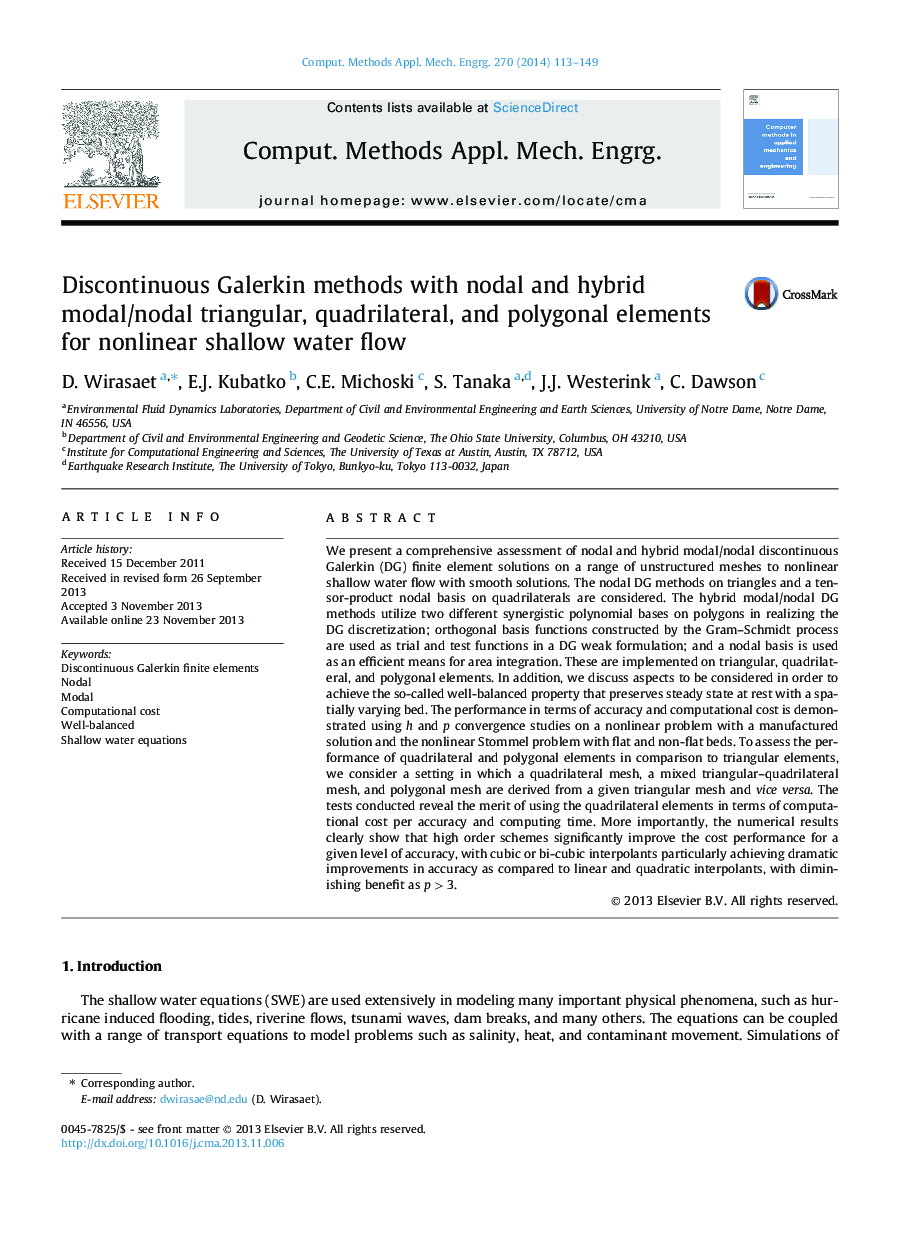| کد مقاله | کد نشریه | سال انتشار | مقاله انگلیسی | نسخه تمام متن |
|---|---|---|---|---|
| 498089 | 862965 | 2014 | 37 صفحه PDF | دانلود رایگان |

• We investigate the performance of high-order DG methods for the SWEs.
• We examine the performance of triangular, quadrilateral, and polygonal DG elements.
• We discuss aspects on obtaining a well-balanced property in high-order nodal DG.
• High-order schemes outperform linear-element schemes in the cost-per-accuracy basis.
• A computational benefit is observed in tensor-product quadrilateral elements.
We present a comprehensive assessment of nodal and hybrid modal/nodal discontinuous Galerkin (DG) finite element solutions on a range of unstructured meshes to nonlinear shallow water flow with smooth solutions. The nodal DG methods on triangles and a tensor-product nodal basis on quadrilaterals are considered. The hybrid modal/nodal DG methods utilize two different synergistic polynomial bases on polygons in realizing the DG discretization; orthogonal basis functions constructed by the Gram–Schmidt process are used as trial and test functions in a DG weak formulation; and a nodal basis is used as an efficient means for area integration. These are implemented on triangular, quadrilateral, and polygonal elements. In addition, we discuss aspects to be considered in order to achieve the so-called well-balanced property that preserves steady state at rest with a spatially varying bed. The performance in terms of accuracy and computational cost is demonstrated using h and p convergence studies on a nonlinear problem with a manufactured solution and the nonlinear Stommel problem with flat and non-flat beds. To assess the performance of quadrilateral and polygonal elements in comparison to triangular elements, we consider a setting in which a quadrilateral mesh, a mixed triangular–quadrilateral mesh, and polygonal mesh are derived from a given triangular mesh and vice versa . The tests conducted reveal the merit of using the quadrilateral elements in terms of computational cost per accuracy and computing time. More importantly, the numerical results clearly show that high order schemes significantly improve the cost performance for a given level of accuracy, with cubic or bi-cubic interpolants particularly achieving dramatic improvements in accuracy as compared to linear and quadratic interpolants, with diminishing benefit as p>3p>3.
Journal: Computer Methods in Applied Mechanics and Engineering - Volume 270, 1 March 2014, Pages 113–149